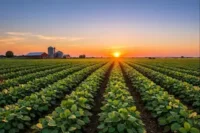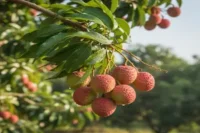A Comprehensive Guide to Understanding Pumpkin Growth Stages
Published: 2 Apr 2024
The word “pumpkin” originated in England and North America. It evolved from a word of melon. It is a type of squash plant. It belongs to the Cucurbitaceae family. The color of the pumpkin is orange, and some varieties are green, yellow, or white. Pumpkin is associated with autumn and is commonly used in cooking, such as preparing tasty pies.
They are frequently curved and used as decorations for Halloween. It has a rugged, thick rind with distinctive grooves. In this comprehensive guide, I explain the pumpkin growth stages, which start with selecting seeds and end with the harvest. Understanding the stages of pumpkin growth is essential for any gardener who dreams of a bountiful harvest.
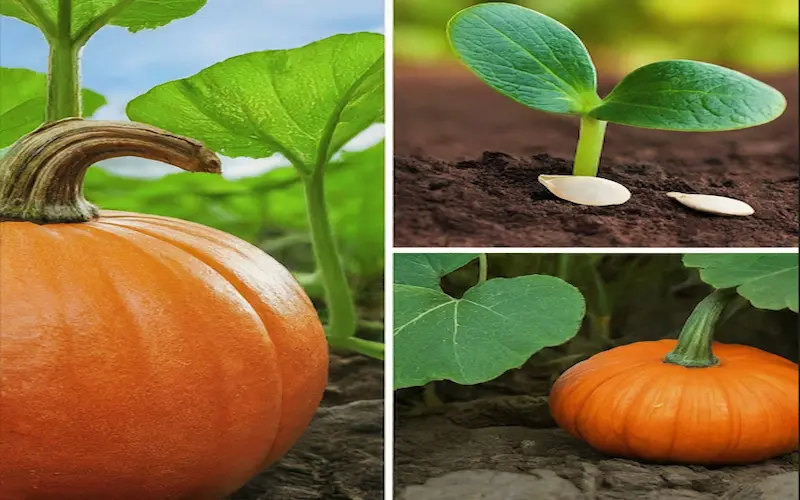
The Different Pumpkin Growth Stages
Pumpkins, like all plants, have different growth stages. Each stage has its characteristics. It is essential to understand all these stages for successful pumpkin growth.
The following sections will analyze these stages, exploring their essential characteristics and requirements. This knowledge is the foundation upon which we build our gardening practices, ensuring that we are in tune with the needs of our pumpkin plants at every step.

Germination and Seedling Growth Stage of Pumpkin Growth Stages
Germination is the first stage of pumpkin growth. It is the moment the seed begins its journey toward becoming a pumpkin. This stage is both thrilling and critical. During this stage, the seed absorbs water, which swells the seed and activates its internal mechanisms.
Now, the outer shell of the seed breaks open, and a tiny root emerges known as the radicle. This is followed by the shoot, which will become the stem, pushing upward toward the light. This initial growth is fragile and determined as the seedling seeks to establish itself.
During this stage, I am meticulous about maintaining consistent moisture and protecting the seedlings from the elements, as they are particularly vulnerable.
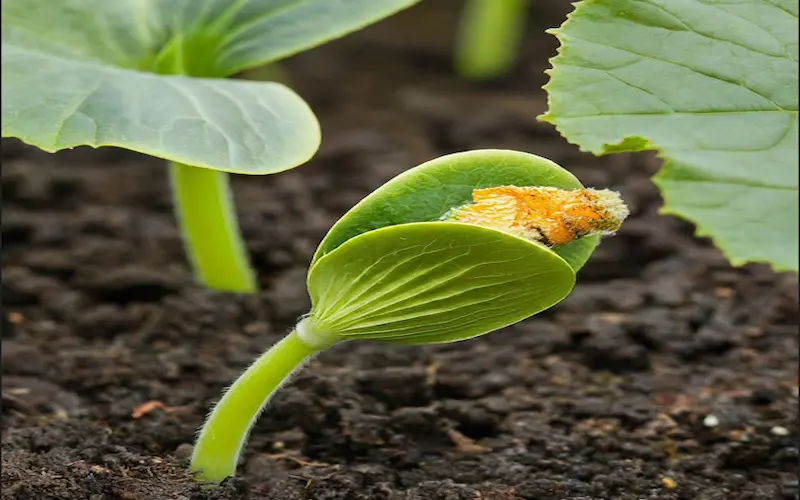
The seedling stage is a period of rapid growth and development. The first true leaves, different from the seed leaves (cotyledons), will appear, and the plant will begin to photosynthesize, creating its food from sunlight.
This is a time of care and adjustment for the gardener, ensuring the seedlings have enough light, water, and weed protection. Watching these tiny plants take shape and establish their presence in the garden is magical.
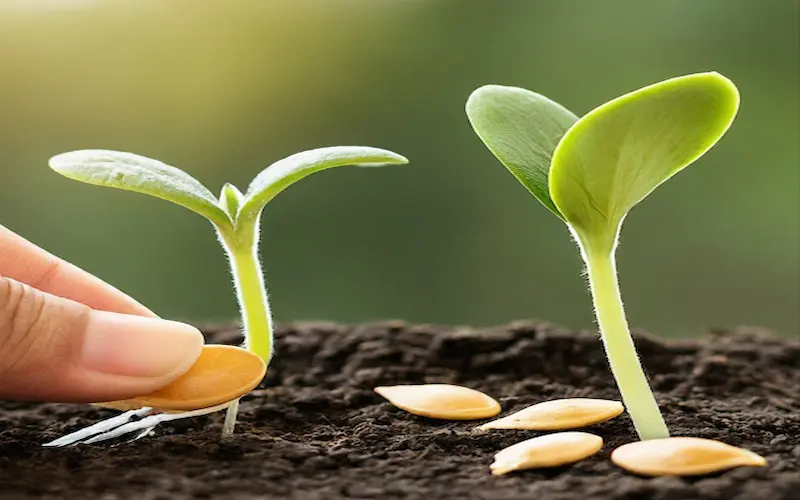
Vegetative Growth and Vine Development of Pumpkin Growth Stages
When seedlings mature, then, vegetative growth starts. Now, the pumpkin plant truly begins to showcase its potential. The stem elongates, and more leaves develop, creating a larger surface area for photosynthesis. These leaves are the engines of growth, capturing sunlight and carbon dioxide to fuel the plant’s expansion.
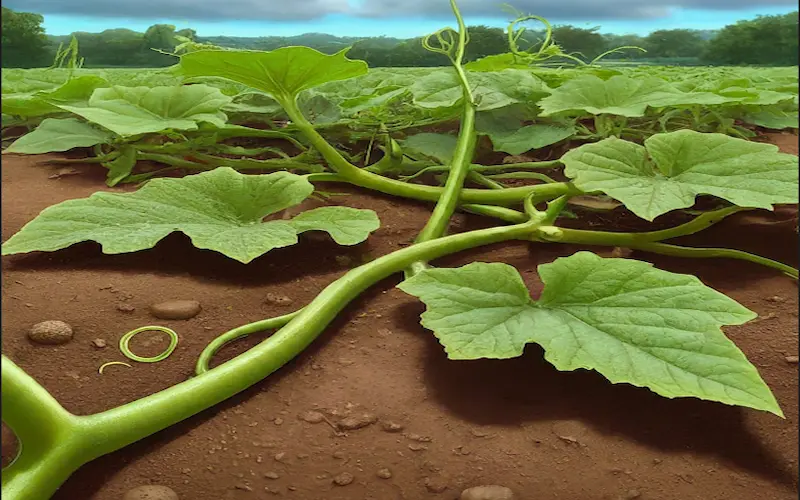
During this stage, the pumpkin plant’s vine grows particularly above the ground, and the root develops under the ground. The vines creep and climb, seeking out space maximum 12 to 15 feet in all directions. Their tendrils reach out, grasping onto nearby supports or spreading across the ground. This is where the plant establishes its framework, setting the stage for future fruit production.
Pumpkin plants also need ample space for healthy vine development and, if necessary, guiding the vines in a direction that maximizes their exposure to sunlight and minimizes competition with other plants.
Pumpkins require high water demand during vegetative growth. It’s also important to monitor the plant’s nutritional needs during this stage.
The rapid development of vines and leaves requires a steady supply of nutrients. Therefore, I often amend the soil with compost or a balanced fertilizer to ensure the pumpkin plants have all they need to thrive. Keeping an eye out for pests and diseases is also crucial, as a healthy plant at this stage will be better equipped to produce a bountiful harvest later on.
Weed control, mulching, and regular cutting of side shoots are also most beneficial for the growth of vines and future fruits.
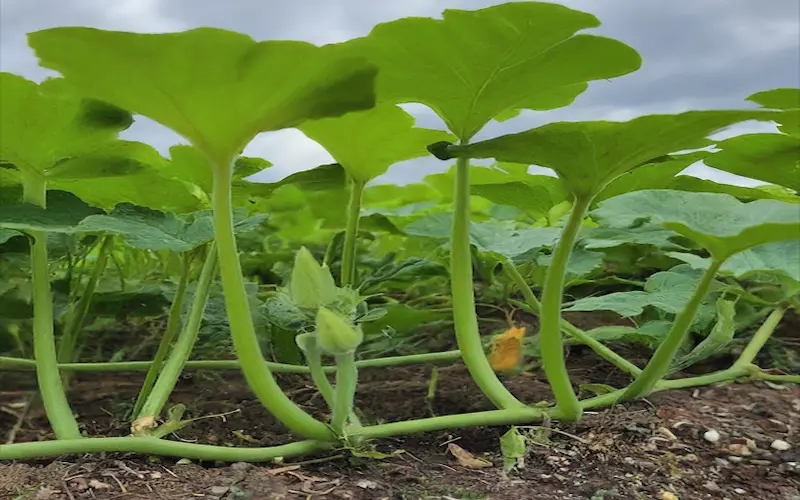
Flowering Stage of Pumpkin Growth Stages
The flowering stage is significant in the pumpkin plant’s life cycle. After growing vines and leaves, many yellow flowers appear on the pumpkin plant, which is called the flowering stage of pumpkin growth stages.
These flowers are the plant’s reproductive organs, and their successful pollination is essential for fruit development. Pumpkin plants produce male and female flowers, with the former appearing first and in greater numbers.
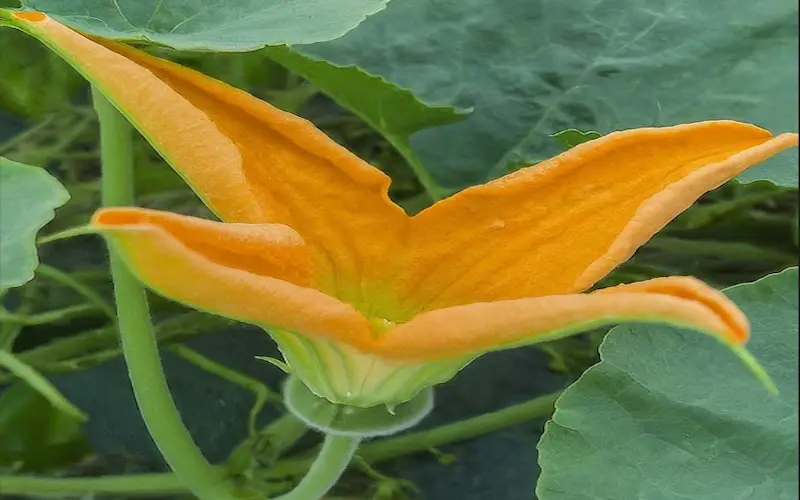
Pollination Stage of Pumpkin Life Cycle
Pollination is the transformation of Pollen grains from male reproductive organs (anthers) to female reproductive organs (stigma) of a flower by wind, water, and animals (such as bees, butterflies, birds, and bats). The male flowers open and release pollen, while the female flowers, identifiable by the tiny fruit at their base, wait to be pollinated.
In my garden, I often actively pollinate, using a small brush to transfer pollen from male to female flowers, ensuring that each flower has the best chance of developing into a fruit. However, bees and other pollinators will do this job effectively under ideal conditions.
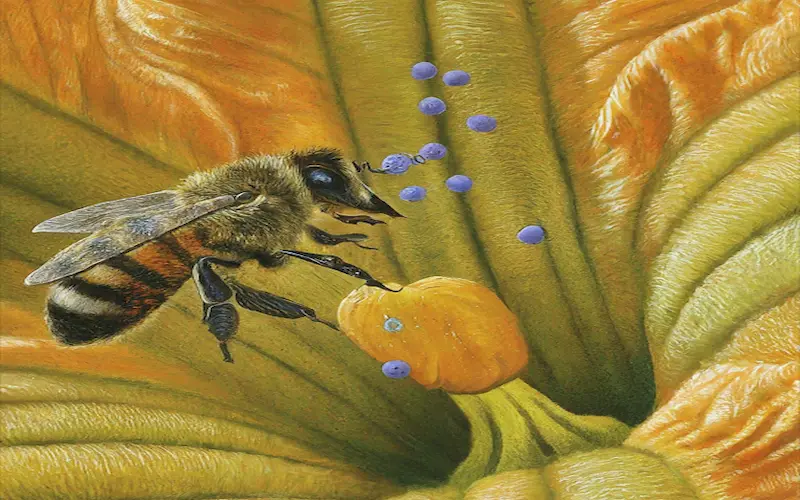
Time selection is essential for pollination because the flowers are only receptive temporarily. A healthy population of pollinators is very important for a successful pumpkin crop. I encourage pollinators by planting a diverse range of flowering plants and avoiding the use of pesticides that can harm these essential creatures.
Witnessing successful pollination and the beginning of fruit development is one of the most rewarding aspects of growing pumpkins.
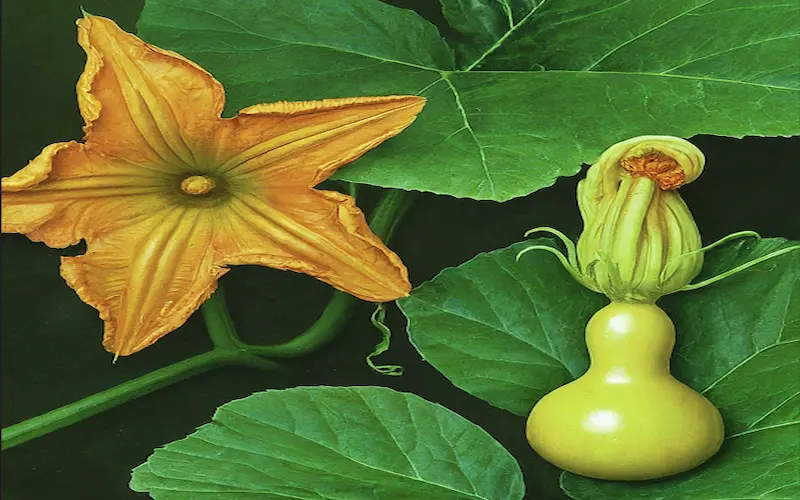
Fruit Development
After successful pollination, the pumpkin plant enters the fruit development stage. The fertilized female flowers begin to swell at the base, forming the beginnings of a pumpkin. The tiny green orbs increase due to the plant’s photosynthesis and are supported by a robust root system.
Significant changes occur during fruit development. Their size, shape, and color will evolve as they grow. It’s essential to provide consistent watering during this stage, as fluctuations can lead to issues like blossom end rot or irregularly shaped fruits.
As the pumpkins enlarge, I adjust their position slightly, if necessary, to prevent soft spots and ensure even coloring.
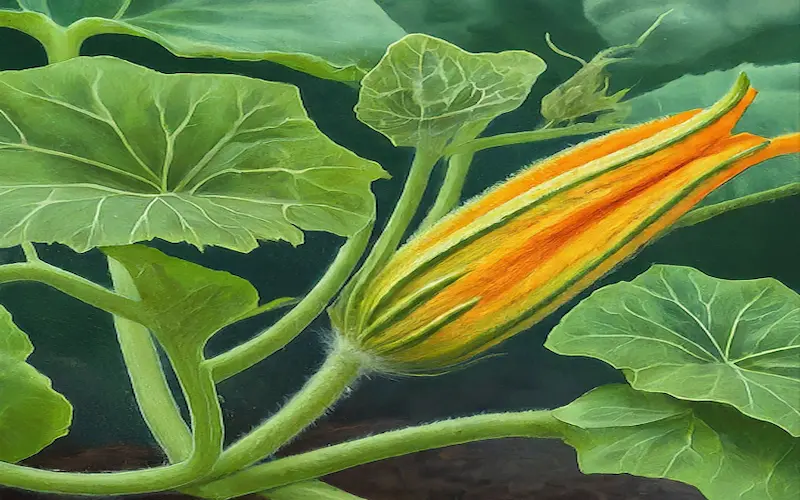
Maturation
Maturation is the last phase of fruit development. When the pumpkins’ size is full, colors are also changed, like orange and white or other hues, depending on the variety. It’s a slower phase, where the plant’s energies are focused on ripening the fruit. During this stage, I reduce watering for the rind to become hardened and ready for harvest.
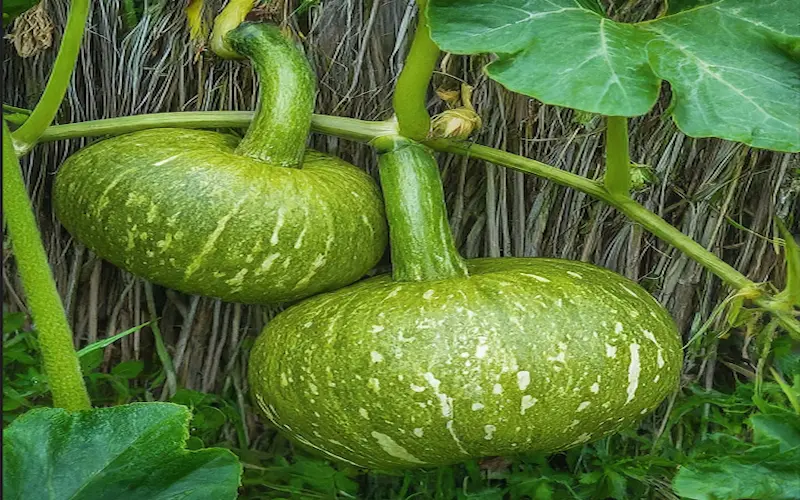
Harvest and Post-Harvest Care
They were harvesting results from all the hard work done for the pumpkin growth stages. The right time to harvest is when the rinds are hard and the pumpkins have gained their desired colour. A gentle thump should yield a hollow sound indicating they are ready.
I use a sharp knife or pruning shears to cut the pumpkins from the vines, leaving a few inches of stem attached for better handling and to prevent premature rotting.
Post-harvest care is crucial for preserving the quality of the pumpkins. After harvesting, I clean them gently with water and allow them to cure in the sun for a week to harden the rind further and heal any cuts. This curing process also helps to extend their shelf life.
Once cured, I store the pumpkins in a cool, dry place. They can last for months, ready to be used for decoration or in delicious autumnal recipes.
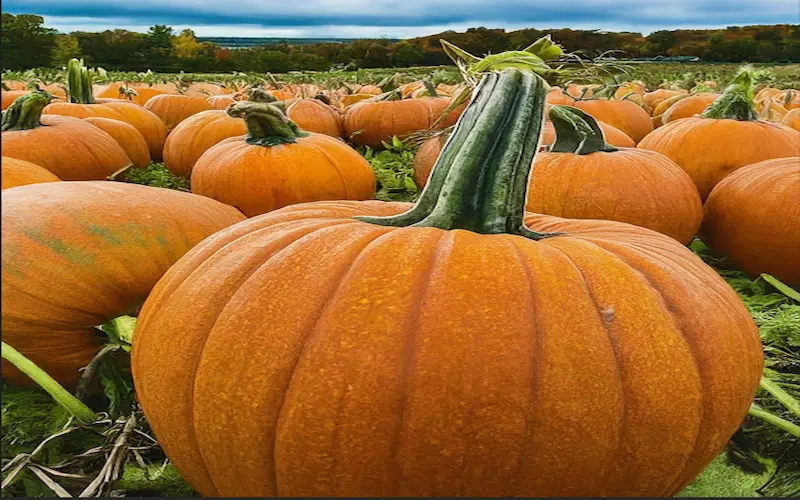
Common Problems and Challenges During Each Growth Stage
Throughout the pumpkin growth stages, various problems and challenges can arise. Overwatering or under-watering can be detrimental during germination and seedling growth, as can temperature fluctuations. It’s essential to monitor the seedlings closely and provide a stable environment.
Nutrient deficiencies or excesses during vegetative growth and vine development can affect the plant’s health. Pests such as squash bugs and cucumber beetles may also appear, seeking to feed on the tender vines and leaves. Vigilance and appropriate organic control measures are necessary to keep these pests at bay.
Flowering and pollination bring their own set of challenges. Poor pollinator activity can lead to inadequate pollination and reduced fruit set. Sometimes, environmental stress can cause the plant to produce more male flowers than female, skewing the balance necessary for fruit development.
Consistent watering is critical to preventing issues like blossom end rot as the pumpkins develop and mature. Diseases such as powdery mildew can also affect the plant, potentially impacting fruit quality. Regular inspection and preventive measures, like proper spacing for air circulation, can help minimize disease risk.
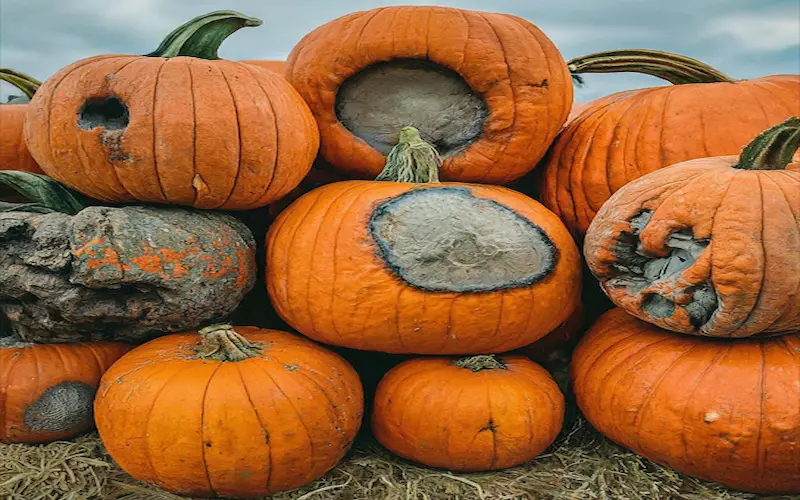
Finally, during harvesting and post-harvest care, handling the pumpkins carefully is essential to avoid bruising or damaging the rind, which can lead to decay. Proper curing and storage are critical for maintaining the quality of the pumpkins after harvest.
Pumpkins Growing Tips
There are several best tips for growing pumpkins that can help overcome the common challenges faced during the growth stages.
- A suitable variety is most important, depending on your climate and growing conditions.
- Soil preparation is also a significant factor. Preparing the soil with plenty of organic matter provides the nutrients for healthy growth.
- Providing ample space for the vines to spread and ensuring good air circulation can reduce disease risk.
- Mulching also helps to retain soil moisture and suppresses weeds that compete with the pumpkin plants for resources. Regular monitoring for pests and diseases and timely interventions are essential.
- Supporting pollinators by planting a variety of flowering plants and avoiding the use of harmful pesticides is another best practice. During fruit development, gently repositioning the pumpkins can encourage even growth and prevent soft spots.
- Harvesting at the right time is an essential factor. Providing appropriate post-harvest care, including curing and storage, will ensure that your pumpkins are of the highest quality.

What is pumpkin growing time?
The time it takes for pumpkin plants to grow varies depending on the variety and growing conditions. Most pumpkin varieties take between 90 to 120 days from planting to harvest. However, some varieties may mature faster, while others may take longer. It’s essential to consider factors such as the climate, soil quality, and proper care, including watering and fertilizing, to ensure optimal growth and a successful harvest. Additionally, starting pumpkins indoors several weeks before the last frost date in your area can give them a head start and extend the growing season.
Conclusion:
Growing pumpkins is a rewarding journey through distinct and fascinating stages. Each phase of the pumpkin growth stages brings its own set of challenges and joys. From germinating a tiny seed to harvesting a plump, ripe pumpkin, the process is a testament to the wonders of nature and the rewards of diligent gardening.
.
If you’ve found this guide helpful and are ready to embark on your pumpkin-growing adventure, or if you want to refine your pumpkin gardening skills further, I invite you to stay connected and join our community of mybestvegetables.com lovers and green thumbs. Together, let’s continue to learn, grow, and celebrate the beauty of gardening.

- Be Respectful
- Stay Relevant
- Stay Positive
- True Feedback
- Encourage Discussion
- Avoid Spamming
- No Fake News
- Don't Copy-Paste
- No Personal Attacks



- Be Respectful
- Stay Relevant
- Stay Positive
- True Feedback
- Encourage Discussion
- Avoid Spamming
- No Fake News
- Don't Copy-Paste
- No Personal Attacks
